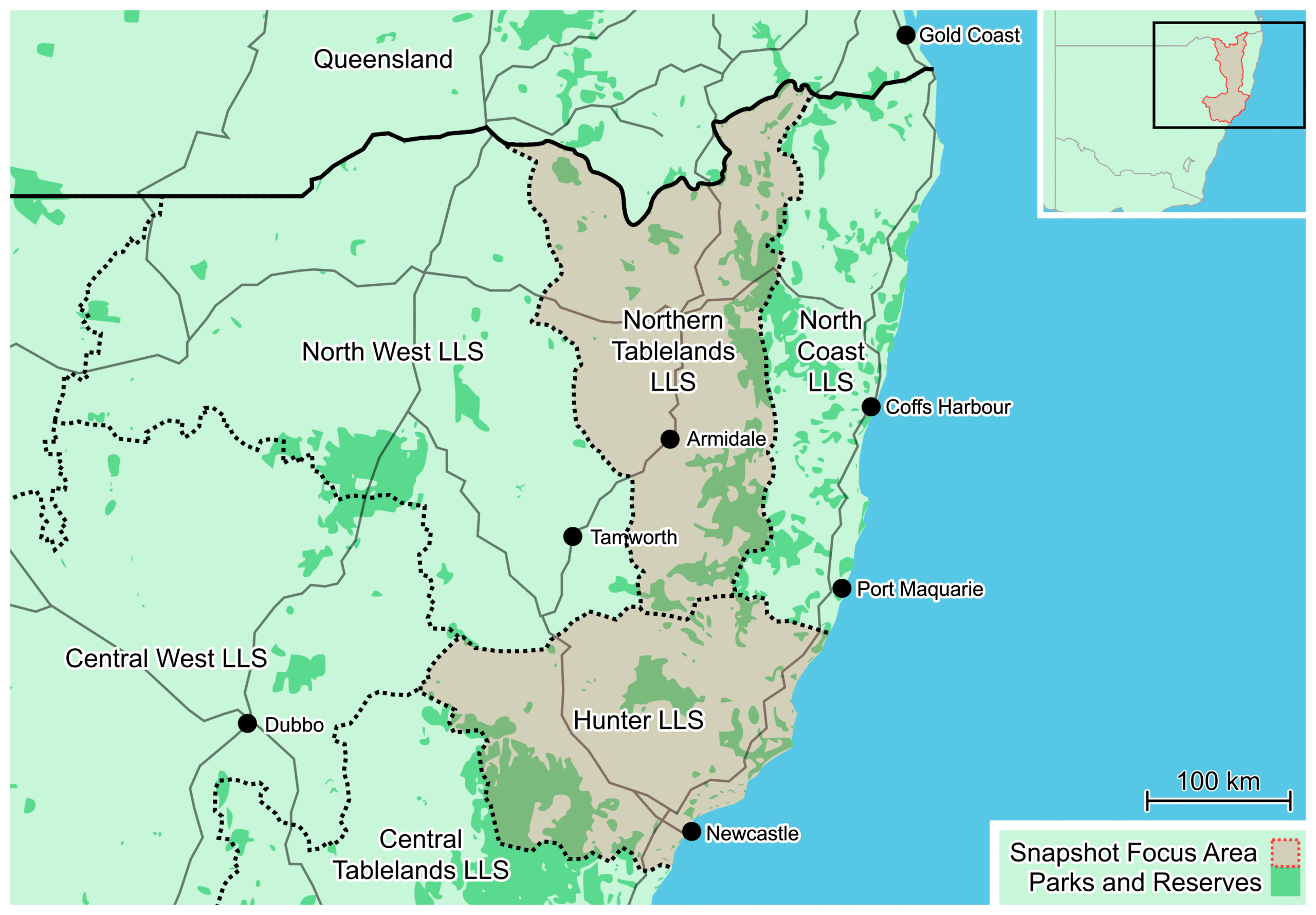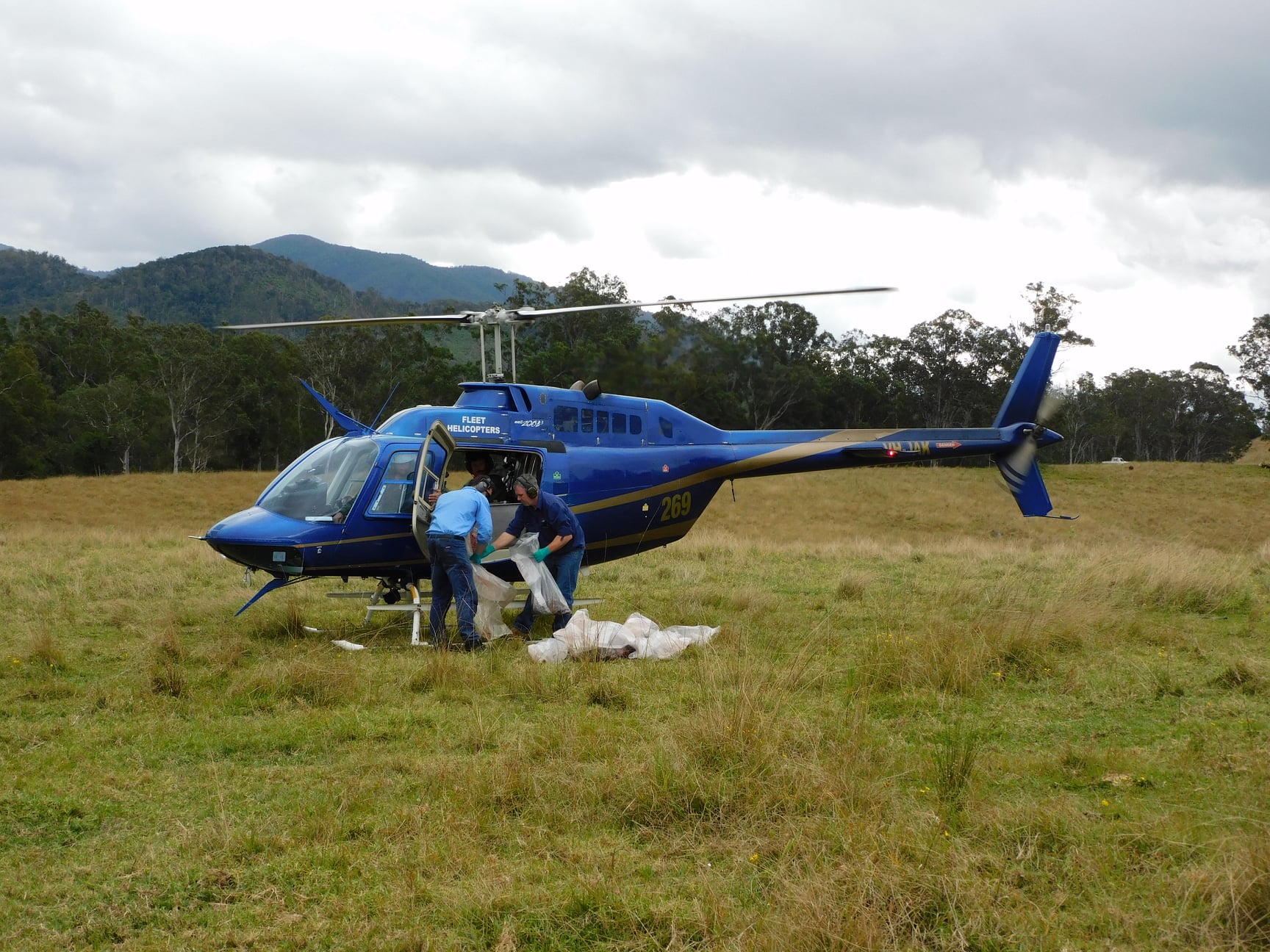Project snapshot:
Best practice pest management in New South Wales’ Northern Tablelands – integrative, adaptive, holistic
Showcasing landscape-scale collaboration to manage invasive animals across tenure and terrain:
Stretching across the high country of north-eastern New South Wales, the Northern Tablelands is a region of rolling granite hills, grassy woodlands, and rugged escarpments. Bounded by the Great Dividing Range, this elevated landscape harbours some of the state’s most ecologically significant habitats. With a cooler climate and reliable rainfall, the region is valued for its productive grazing lands and fertile pastures, while its national parks and nature reserves safeguard rare ecosystems, threatened species and cultural heritage.
Despite its natural values, the Northern Tablelands faces many of the same challenges seen across Australia. Habitat fragmentation, altered fire regimes, and a changing climate have compounded the damage caused by introduced species such as foxes, feral cats, wild dogs, feral pigs, rabbits, deer and goats. These animals pose a dual threat to biodiversity and agriculture, and their effective management requires coordination at scale, across tenures, and across species. In the Northern Tablelands of New South Wales, communities, landholders and conservation organisations are working together to manage threats and restore habitat by combining traditional knowledge, modern science and local leadership to protect the biodiversity and agricultural systems of the Tablelands’ unique landscape.

The Northern Tablelands in New South Wales hosts a mix of productive agricultural land and pristine natural environments. Photo: C Goodwin via wikimedia.
As the North East NSW Wild Dog Coordinator, Dave Worsley (CISS) works across more than 8 million hectares covering the Northern Tablelands and parts of the North Coast, North West and Hunter Local Land Services (LLS) regions. What started as a role focused solely on wild dogs has evolved into a comprehensive, multi-species, integrated pest animal management role. Working with the LLSs, Parks and Wildlife, contract pest managers, landholders, and the local community, control efforts now span a full suite of priority pests outlined in the LLS’s Regional Strategic Pest Animal Management Plans. These priority pests include wild dogs, feral pigs, foxes, cats, rabbits, and several species of deer.
Pest management in the Northern Tablelands is holistic. It’s built on the understanding that invasive species interact with each other and with the environment, and that targeting one in isolation may not have the desired effect of reducing impacts. For example, in some environments knocking down fox populations may still leave feral cats in the environment. In many cases, if both predators are not sufficiently suppressed native wildlife remains under pressure. Similarly, feral pigs can consume baits meant for wild dogs, undermining control efforts unless pigs are managed first. Management actions for each species are planned alongside the actions required for other species and carefully timed across the year. The philosophy of managing introduced species in concert is at the heart of the strategy.
Pest management in the Northern Tablelands is integrated. Integrated pest management brings together a wide range of tools, knowledge systems, and people to address complex pest problems in a coordinated way. Rather than relying on a single method or agency, it blends traditional control approaches (like baiting, trapping, and shooting) with modern technologies (such as remote cameras and data mapping) and ecological knowledge to build a more complete and effective response. In the Northern Tablelands, this integrative approach also means working across land tenures – pest animals don’t stop at property boundaries, and neither do the people managing them. Public land managers, private landholders, local councils, and community groups are all involved in tackling pest animals at a landscape scale.

Dave Worsley works across more than 8 million hectares of the Northern Tablelands region, including areas in the Northern Tablelands LLS, Hunter LLS, North Coast LLS, and North West LLS. Image: CISS, NFCFMC Program.
Community engagement is also a critical part of good pest management. Landholders are encouraged to report activity using tools like FeralScan, and to participate in local control efforts. Training in baiting, trapping, surveillance and data sharing is helping to standardise best practice across the region. Contract pest managers operate seamlessly across numerous properties, managing multiple pests wherever they roam. This is supported by strong collaboration with NSW Department of Primary Industries, Biosecurity NSW, LLS biosecurity staff, public land managers, and local landholders.
Pest management in the Northern Tablelands is well planned, with all the stakeholders having a seat at the table to work out what needs to be done where, when and by who. The plans are deliberately adaptive, designed to respond to changing conditions, emerging threats, and what’s actually working on the ground. Tools and tactics shift depending on weather, terrain, species behaviour and available resources. If crops aren’t growing, pigs are easier to bait. If poor rainfall changes the landscapes productivity, baiting timelines shift to align with peak predator movement. This responsiveness allows for both proactive planning and reactive action – controlling ahead of expected surges, while being ready to respond to emerging threats.

Aerial pest control operations are a hallmark of many of the programs running in the Northern Tablelands. Image: Michael Elliott.
Across such a large area, the goal of pest management is suppression, not eradication. With current tools, complete eradication of most invasive animals at a regional scale simply isn’t possible. Instead, the aim is to reduce impacts to a level where biodiversity can recover, agricultural losses are minimised, and invasive species are less likely to spread. It’s a model of long-term, collaborative, landscape-scale management – and it’s working.
The Northern Tablelands shows what’s possible when pest management is treated not as a seasonal chore, but as a strategic and shared responsibility, incorporated into yearly land management plans. Best practice pest management integrates as many appropriate tools as possible, adapts to arising situations, and approaches control efforts with a holistic view of ecosystems. It’s a compelling example of how people, tools, and knowledge can come together across landscapes and tenures to deliver real, lasting benefits for farming communities and native species.
Information in this section was obtained from Dave Worsley and NSW Local Land Services [1, 2,].
This project snapshot initially appeared in the June 2025 issue of the National Feral Cat and Fox Management Coordination Program Newsletter. To subscribe to the newsletter, click here or fill out the form at the bottom of the page.
Banner photo: Dave Worsley.
Other Resources
Click here to find out more about FeralScan a free community-designed website and smartphone app that allows you to record observations and evidence of introduced pest animals (such as foxes and feral cats), the damage they cause (including predation of native wildlife or lambs), and control actions in your local area (such as baiting, trapping and shooting).
The PestSmart Toolkits provide further information about how to plan, manage and improve your feral cat or fox management program.
The CISS Glovebox Guides, Planning Guides and Field Guides are useful pdf or printed booklets for managing pest animals like feral cats and foxes, developing a simple feral cat or fox management plan or undertaking a best practice baiting program.
